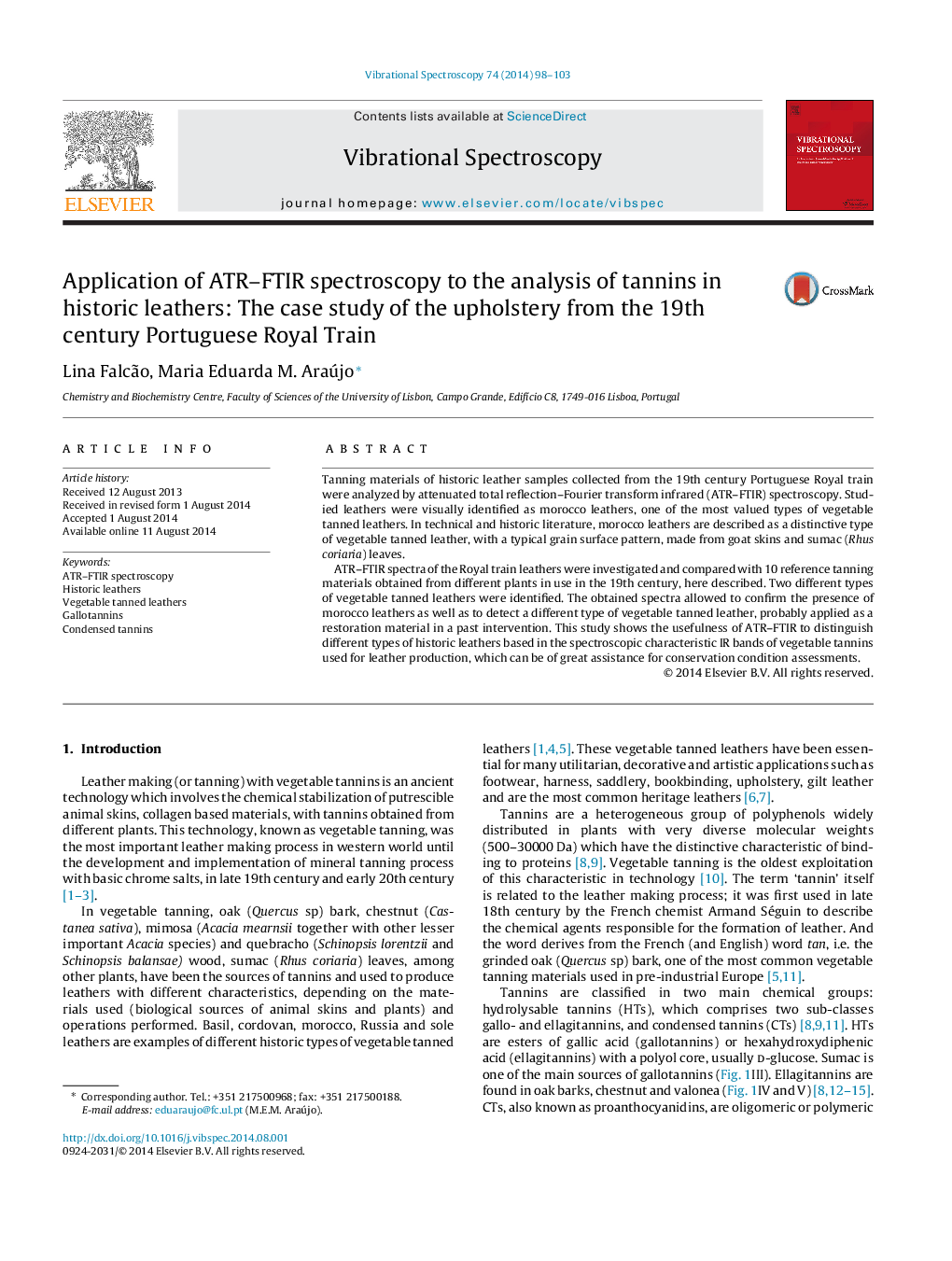| Article ID | Journal | Published Year | Pages | File Type |
|---|---|---|---|---|
| 1249937 | Vibrational Spectroscopy | 2014 | 6 Pages |
Tanning materials of historic leather samples collected from the 19th century Portuguese Royal train were analyzed by attenuated total reflection–Fourier transform infrared (ATR–FTIR) spectroscopy. Studied leathers were visually identified as morocco leathers, one of the most valued types of vegetable tanned leathers. In technical and historic literature, morocco leathers are described as a distinctive type of vegetable tanned leather, with a typical grain surface pattern, made from goat skins and sumac (Rhus coriaria) leaves.ATR–FTIR spectra of the Royal train leathers were investigated and compared with 10 reference tanning materials obtained from different plants in use in the 19th century, here described. Two different types of vegetable tanned leathers were identified. The obtained spectra allowed to confirm the presence of morocco leathers as well as to detect a different type of vegetable tanned leather, probably applied as a restoration material in a past intervention. This study shows the usefulness of ATR–FTIR to distinguish different types of historic leathers based in the spectroscopic characteristic IR bands of vegetable tannins used for leather production, which can be of great assistance for conservation condition assessments.
